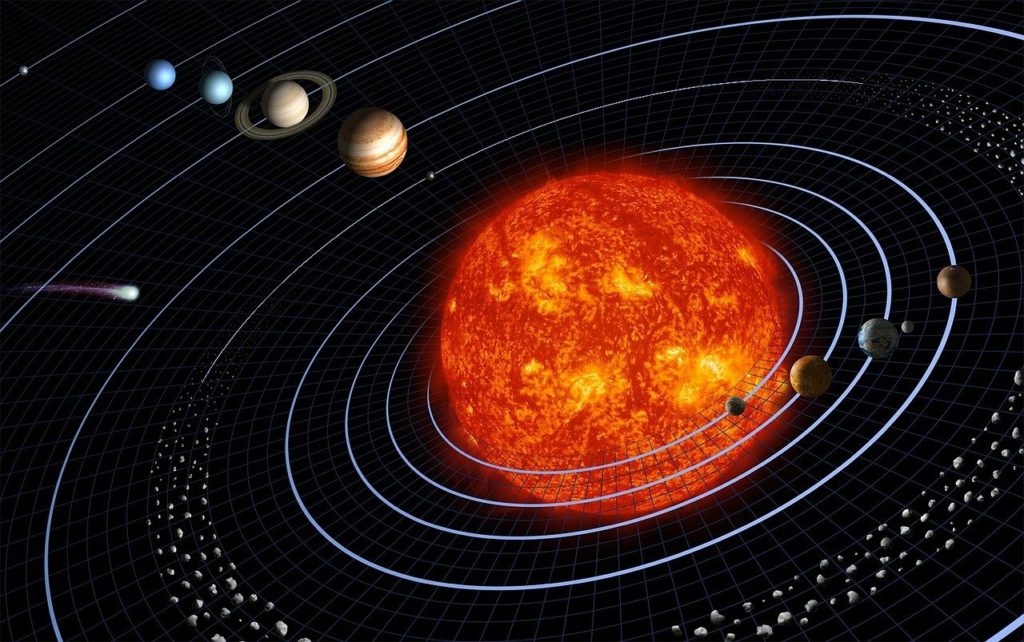
Five planets in a row and visible with the naked eye.
You’ll need a full hand of fingers to count how many planets you’ll be able to see in the night sky this week. Just after sunset, sky watchers will have the opportunity to see Venus, Mars, Jupiter, Mercury and Uranus form an arch stretching into the evening sky. And don’t forget to take a peek at the moon, too! “The heavens are aligning,” said Noah Petro, a scientist with the Lunar Reconnaissance Orbiter project at NASA. “If you have a telescope, you can dust them off or a pair of binoculars; it’s a great excuse to get out and look for the night sky. And if you don’t, you can still see these [planets].” Viewers from around the world will be able to see the spectacle — as long as clear skies and a view of the westerly sky permit. The family portrait moment is called a planetary alignment because several planets are gathering on one side of the sun at the same time. In this case, the planets will form a literal line beneath the moon. Jupiter will be beaming, and Mercury will dangle close to the horizon though a bit dim. But you can’t be fashionably late to this rendezvous: Mercury and Jupiter will descend into the horizon within about 30 minutes after sunset. If you want to watch the planets start popping up one by one, you should go when the sun is close to the horizon, according to Petro.
washingtonpost.com
Last night, of course, was the best night.
The best viewing of the planetary gathering is Tuesday night, but if you miss the scene, there is still time to see the show. The planetary party will happen every night this week. Jupiter just may become more difficult to see as it sinks closer to the horizon the rest of the week, said NASA ambassador Tony Rice in an email. The week’s other days “actually provide better opportunities to see Mercury as it puts another degree between it and the horizon through mid-April,” Rice said. With a clear view of the horizon, four of the five planets will be visible with the naked eye. But if you want to see Uranus, you will need some equipment. It’s not uncommon for planetary alignments to happen, but it’s “certainly noteworthy” when most of the planets are visible to the naked eye, Petro said. Venus will steal the show with its brightness after Jupiter and Mercury make their grand exit. Uranus will linger near Venus but will be harder to spot. Mars will hang highest in the sky, right under the moon. While a good reason to look up, Rice wrote the celestial lineup isn’t especially rare. “It happens every time the planets line up on one side of the Sun,” he said. “Which, given Mercury’s 88-day orbit and Venus’s 225-day orbit, is about once a year.”
I fear too much street light in the city,
